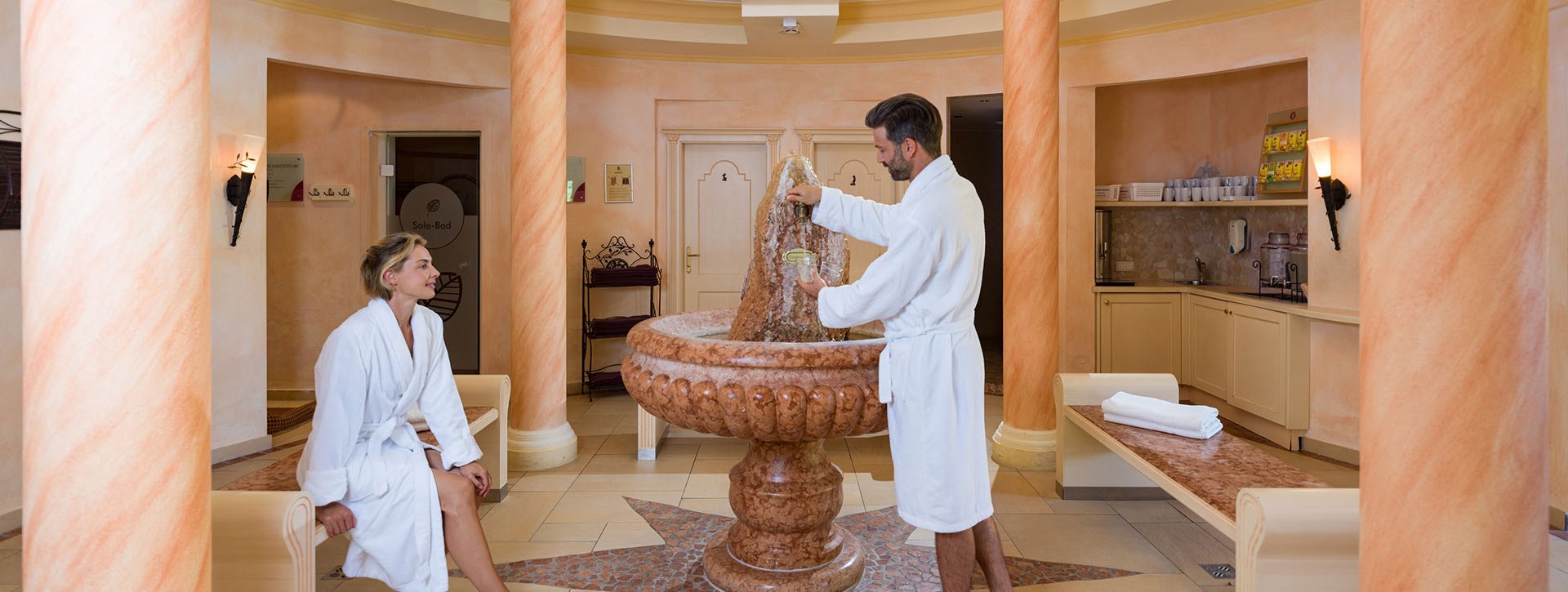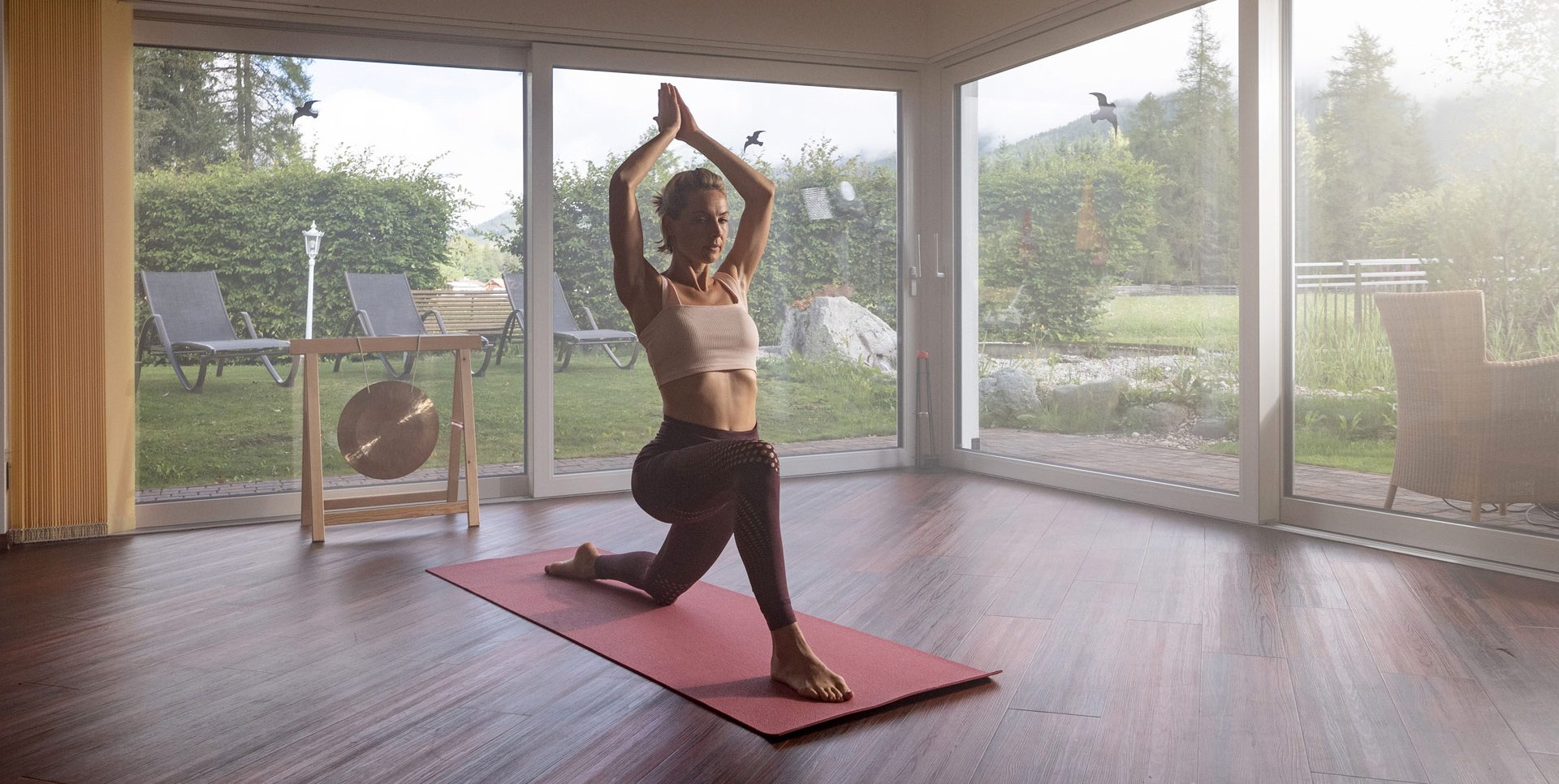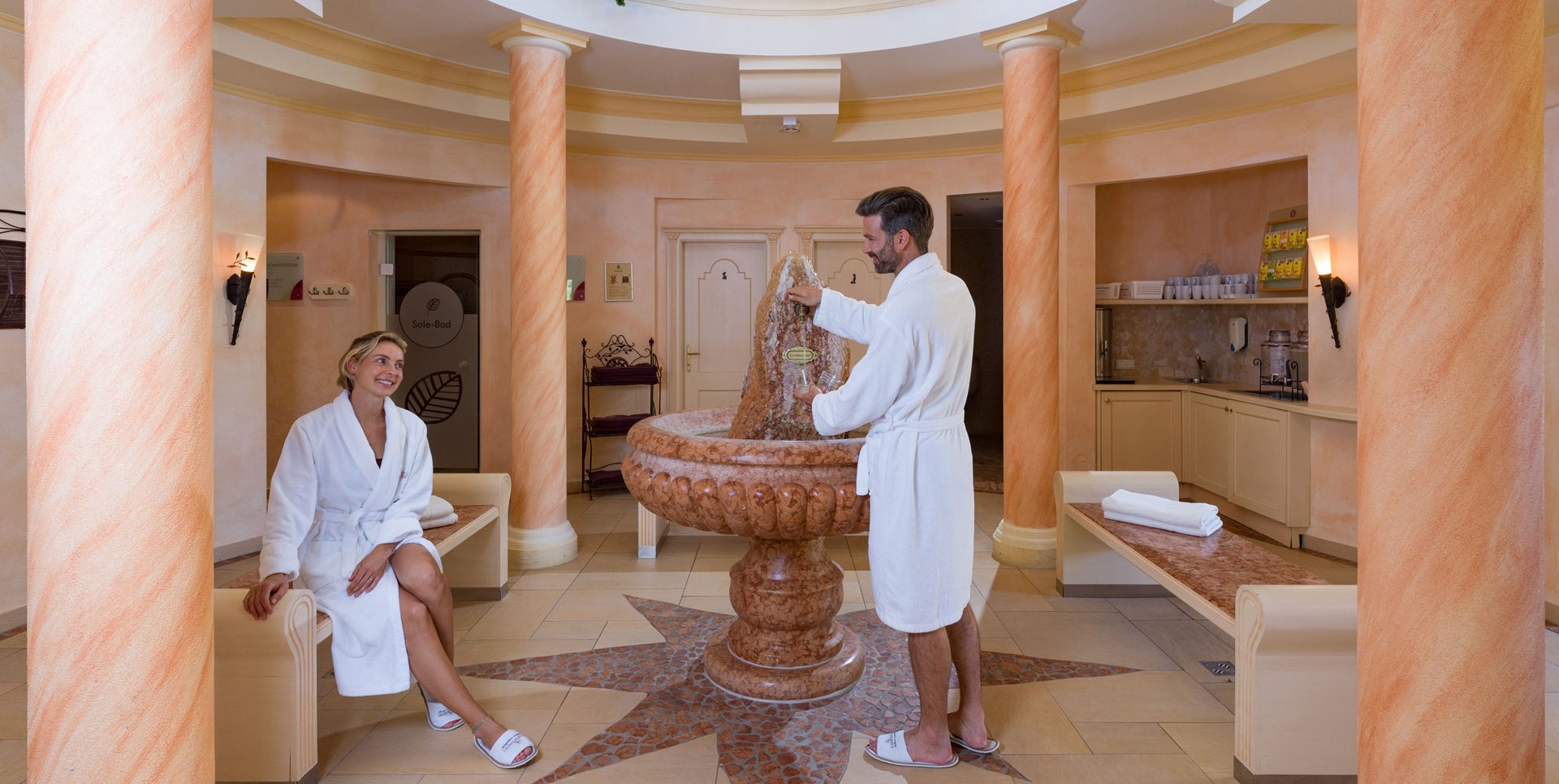Yoga
Yoga helps us achieve holistic well-being and has many positive effects that go far beyond mobility. Regular breathing goes hand in hand with yoga exercises, which together guide energy and result in an effective physical-mental workout. The beneficial effects of yoga and meditation are also noticeable in everyday life and help people of all ages to achieve balance and joy.
Be active and relax in our hotel

Yoga teaches us to stop, to observe, to breathe deeply. To begin with, focusing on yourself works best in a small group of like-minded people. Why not strengthen your physical and mental balance in a beneficial way in our yoga trial sessions: these yoga classes are adapted to the participants’ previous experience and will bring you deep moments of relaxation!
Approx. 2 x weekly - frequency may vary due to Covid-19 measures
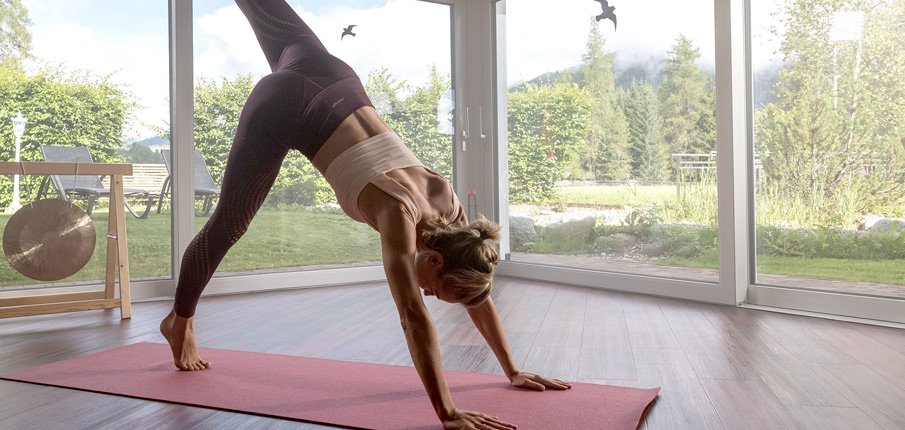
Although we look inwards during yoga and meditation, nature is very close in our movement room. Thanks to our panoramic window, the qualities of each season can be blissfully internalised during practice so that we can consciously connect with nature.
By the way, you can also enjoy the wonderful view during other relaxing activities in our weekly programme such as Pilates, meditation and muscle relaxation.
Our movement room is open daily from 7 am to 7 pm - opening hours may vary due to Covid-19 measures
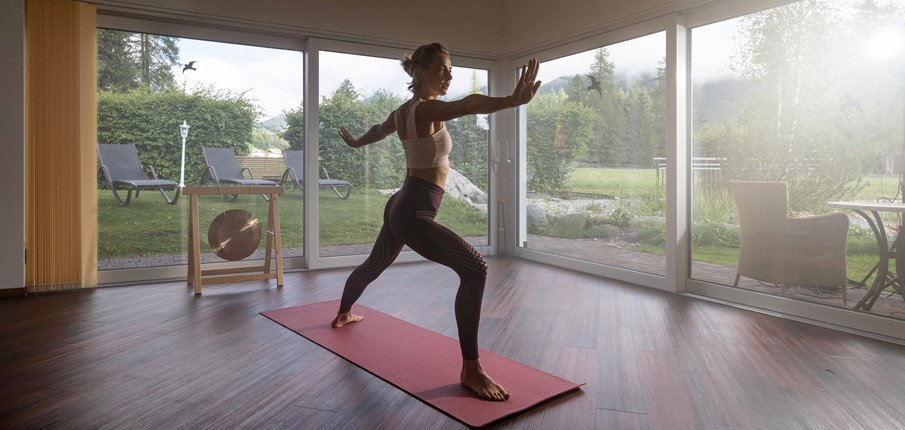
Yoga at Karwendel
Look forward to Hatha Yoga, which combines strength and balance, calms the mind and strengthens the muscles. Hatha yoga combines physical exercises with conscious breathing and calms the mind. Opposites such as heat and coolness, strength and stillness are harmonised, leading us to relaxation. In the yoga trial sessions, the intensity of the class is adapted to the participants’ previous knowledge and experience. Experience yoga sessions that will teach you more awareness, mindfulness and better flexibility.
Approx. 2 taster sessions in the weekly programme - Suitable for all levels - frequency may vary due to Covid-19 measures
All things yoga
What is yoga and what is its effect?
The roots of yoga philosophy go back to around 3500 BC, where the teachings of Hatha Yoga, described in the Yoga Sutras by Patanjali,also originate. Yoga is primarily about concentration and meditation techniques that promote mindfulness and positive thinking. Based on this, desirable qualities can be cultivated through self-discipline - inner peace and balance are achieved. Yoga exercises include physical exercises of the well-known yoga postures (asanas), breathing exercises (pranayama), concentration exercises and meditation (dhyana and dharana), mantras (reciting or chanting syllables or verses) and mudras (performing gestures).
As movement and breath are brought into balance, body and mind are reunited. It is precisely this balance that is good for us in hectic times and it helps us to regain our rhythm. The aim of yoga is to integrate mindful and conscious action into everyday life, even away from the yoga mat. In this way, yoga leads to constant development and helps us cultivate a positive attitude towards life.
Is yoga suitable for me?
Yes, yoga is suitable for everyone! It allows you to develop more awareness and anchor yourself in the here and now. Learn to let go through self-awareness and observation, in your body as well as in your mind. What is surprising for many is that meditation is also a part of yoga, just like breathing exercises, concentration exercises and meditation - and, of course, the well-known physical exercises.
Yoga exercises on the mat can be practised regardless of age and physical condition, as the intensity of the exercises is simply adjusted accordingly. Regardless of which yoga tradition is practised, yoga classes offer every participant the opportunity to come to terms with themselves, to let go and also to explore their limits. This helps us to unleash our personal potential, find our way back to our true selves and the essential things in life. Yoga also helps us confront our fears and insecurities and free ourselves from them.
Hatha Yoga
Probably the most well-known yoga movement in our part of the world: Hatha yoga begins with body awareness exercises. Yoga postures (asanas) are performed in combination with conscious breathing to strengthen muscles, create balance and calm the mind.
Hatha Yoga asanas are practised individually or as a sequence of movements (Vinyasa or Flow). The postures are complemented by breathing exercises (pranayama), mental relaxation techniques and meditation. From the ancient teachings of Hatha Yoga, several more body-oriented styles or traditions have developed in the West. What these techniques, some gentle and some powerful, have in common is that, over time, more awareness, mindfulness and better flexibility are achieved.
Yin Yoga
Contrary to active Hatha Yoga, which strengthens the muscular system with its sometimes demanding physical exercises, Yin Yoga is more passive and contains even more moments of relaxation. In order to allow the body to fully engage with the yoga posture, each asana is held for a few minutes.
With this particularly calm style of yoga, a state of deep relaxaction can be achieved. At the same time, Yin Yoga also works with the deeper layers of the body - your fasciae and connective tissue. Yin yoga is less about postures and exactness, but about pausing for several minutes and allowing yourself and your tissues to really let go...
To accept a state of absolute calmness may be challenging, but it is precisely athletes and very active people who benefit most from this style of yoga.
